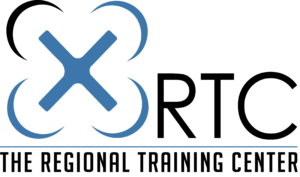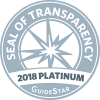
The Los Angeles County Regional Training Center is now:
The Regional Training Center
General Services Administration (GSA) Training Courses
 The Regional Training Center (RTC) provides agencies with the highest quality and most cost-effective training available. We’re driven by an ideological purpose to make public safety the absolute best in the world at a cost that is true to taxpayers. We are mission-centered and apply intelligent innovation and flexibility to bring consultation and course presentation that is precisely focused with measurable outcomes. All our training is built upon our proprietary 85% Rule© of course design and classroom facilitation with material deeply embedded in students using our RRAC Positive Coaching Model©. Our global reach includes German Federal Police Directorate, Korean National Fire Academy, and the Royal Canadian Mounted Police.
The Regional Training Center (RTC) provides agencies with the highest quality and most cost-effective training available. We’re driven by an ideological purpose to make public safety the absolute best in the world at a cost that is true to taxpayers. We are mission-centered and apply intelligent innovation and flexibility to bring consultation and course presentation that is precisely focused with measurable outcomes. All our training is built upon our proprietary 85% Rule© of course design and classroom facilitation with material deeply embedded in students using our RRAC Positive Coaching Model©. Our global reach includes German Federal Police Directorate, Korean National Fire Academy, and the Royal Canadian Mounted Police.
 The RTC, America’s leading Unmanned Aircraft Systems training innovator and largest certified California public safety trainer, is pleased to announce that they have partnered with Khepra Inc. to present their training courses through the U.S. General Services Administration (GSA) Federal Supply Schedule under Contract Number 47QTCA1800KZ. RTC courses can be found in Special Item Numbers 611512 – flight training.
The RTC, America’s leading Unmanned Aircraft Systems training innovator and largest certified California public safety trainer, is pleased to announce that they have partnered with Khepra Inc. to present their training courses through the U.S. General Services Administration (GSA) Federal Supply Schedule under Contract Number 47QTCA1800KZ. RTC courses can be found in Special Item Numbers 611512 – flight training.
To schedule training:
John Laskowski
Khepra Inc.
(805) 914-5800
www.khepra.com
This course was created to achieve measurable student outcomes utilizing blended learning, classroom facilitation, and scenario-based training for critical incident commanders. Students will demonstrate the ability to apply intuitive sense-making strategies while working in a fast-changing, chaotic environment by using the 5 tenets of Working in The Edge of Chaos ©.
The training begins online prior to the two in-class training sessions. This class is intended for first and second-line supervisors who will be the first-responding incident commander at the scene of a large-scale, critical incident. When possible, RTC staff select students from the iteration registration list that reflect diversity related to agency size, structure, and regional resources to maximize student contributions and learning. Graduates of this course will have the knowledge and skills to establish and maintain a productive and purposed incident command.
Course Length: 9 days in-class, 8 hours online (80 hours total)
- Virtual Classroom Session: 60 days (8 hours of instruction)
- Session-1: 5 days in classroom (40 hours)
- Break Between Sessions: 2-4 Weeks is typical
- Session-2: 4 days in classroom (32 hours)
Part Number: EOC-22
Prerequisites: None
Technical Level: New, Beginner, Intermediate & Advanced students of NIMS, ICS, and SEMS
Student Requirements: None
Recommended For: Supervisors and second level in-field managers
This course was outstanding! My intention is to ensure my agency sends as many sworn staff as possible to this course in the process ensuring it becomes part of our training matrix for lieutenants and sergeants.
Michael P., Whittier PD
This course is made up of student-centered learning activities that allow attendees to safely understand their own biases with a scientific approach. The curriculum design avoids an accusatory tone and focuses on objective facts revealed directly to each student by their own in-class discovery. Students learn in a safe environment with exercises that reveal deep personal preferences (biases) on things that are not at all controversial. It is a fun way to see things we like based on how we were socialized. Ultimately, students personally decide how they will apply the knowledge and skills learned that teach them to recognize their own implicit biases and how to mitigate them.
Part Number: RIB-22-8 (8-hour) :: RIB-22-4 (4-hour)
Course Length: Variable format – 1 day (8 hours) or two 4-hour sessions per day
Prerequisites: None
Technical Level: N/A
Student Requirements: None
Recommended For: Field personnel and Supervisors
**In the 4-hour format there is a morning and afternoon session. Each session can accommodate up to 30 students. **
Startup & Beginner Drone Program Courses
The Unmanned Aircraft Systems (UAS) Program Operators Course is 32 hours of instruction designed to provide organizations with the knowledge and skills necessary to properly maintain or create an aviation program based on unmanned aerial vehicle (UAV) platforms.
Each student will receive a minimum of eight hours of flight instruction as a member of a UAS deployment team and log at least 2 ½ hours of actual flight time with a UAV. All instruction will be consistent with the FAA’s current rules and regulations.
Part Number: UOP-21
Course Length: 4 days (32 hours)
Prerequisites: None
Technical Level: Beginner UAS Operators
Student Requirements: None
Recommended For: sUAS Operators and Supervisors
This class is eligible to include the 16-hour FAA 107 Ground School immediately prior to this course as a combination course for those agencies desiring students to receive a Part 107 Commercial Pilot’s License. Successful graduates of the combination course will be qualified under the FAA’s Part 107, to operate as a Remote Pilot in Command for standard operations.
The Unmanned Aircraft Systems (UAS) Program Operators DoD Course was specifically designed for the Department of Defense and is 40 hours of instruction designed to provide organizations with the knowledge and skills necessary to properly maintain or create an aviation program based on unmanned aerial vehicle (UAV) platforms.
Each student will receive a minimum of eight hours of flight instruction as a member of a UAS deployment team and log at least 2 ½ hours of actual flight time with a UAV. All instruction will be consistent with the FAA’s current rules and regulations.
Part Number: UOP-21D
Course Length: 5-Days (40 hours)
Prerequisites: None
Technical Level: Beginner UAS Operator
Student Requirements: None
Recommended For: sUAS Operators and Supervisors
This class is eligible to include the 16-hour FAA 107 Ground School immediately prior to this course as a combination course for those agencies desiring students to receive a Part 107 Commercial Pilot’s License. Successful graduates of the combination course will be qualified under the FAA’s Part 107, to operate as a Remote Pilot in Command for standard operations.
The UAS Basic Pilots Course is a 16 -hour program of instruction designed specifically and ONLY for agencies that already have an established UAS program and are flying missions with protocols and a comprehensive policy in place. The curriculum is focused on piloting skills coupled with training in UAS safety and general UAS program operations.
Each student will receive a minimum of eight hours of flight instruction as a member of a UAS deployment team and log at least 2 ½ hours of actual flight time with a UAV. All instruction will be consistent with the FAA’s current rules and regulations.
Part Number: BOP-21
Course Length: 2-Days (16 hours)
Prerequisites: None
Technical Level: Beginner UAS Operator
Student Requirements: None
Recommended For: sUAS Operators and Supervisors
This class is eligible to include the 16-hour FAA 107 Ground School immediately prior to this course as a combination course for those agencies desiring students to receive a Part 107 Commercial Pilot’s License. Successful graduates of the combination course will be qualified under the FAA’s Part 107, to operate as a Remote Pilot in Command for standard operations.
This 16-hour course can be combined to precede any UAS course offered.
The Federal Aviation Administration (FAA) requires commercial UAV pilots to pass the Aeronautical Knowledge Test for the Remote Pilot Airman (Part 107). This class was created for public safety to prepare them, and then provide them, with the required FAA test. This course begins online with content assembled by experts who are familiar with the FAA test material.
The online portion is self-paced but follows a progression of information with due dates to aid in completing the material in a timely manner. The class culminates with an in-classroom review just prior to taking the FAA test. The course is taught by FAA Certificated Flight Instructors to ensure the highest level of expertise. Successful graduates will be qualified under the FAA’s Part 107, to operate as a Remote Pilot in Command for standard operations.
Part Number: FGS-21
Course Length: 30 days online / 1 day in classroom (8 hours)
Prerequisite: None
Student Requirements: None
Recommended For: For all personnel wanting to fly sUAS for their department, agency, or commercially
This course starts by guiding students to fully realize all of the potential applications of unmanned aircraft, and specifically how that may fit at their respective agencies. The result is a clearer understanding of the UAS agency objectives so that all of the efforts that follow directly support the effective implementation of the identified mission sets. Attendees examine current laws and regulations and develop an understanding of preemption, as it pertains to federal regulations.
Next students evaluate the suitability of their operational area for UAS missions by examining political support, airspace, terrain, weather patterns, training requirements, safety management systems, funding sources, and operational time periods. Students develop strategies to address privacy and civil rights issues for implementation prior to the use of UAVs to minimize fear and misunderstanding.
Part Number: UMC-21
Course Length: 1-Day (8 hours)
Prerequisite: None
Technical Level: Managers, supervisors, operators & policy writers
Student Requirements: None
Recommended For: sUAS Operators and Supervisors
Advanced Drone Training Courses
This training course is NOT for beginners!
The class consists of three days of intensive scenario-based, hands-on, and precision flight training designed to increase piloting skills and to provide students with the ability to operate in almost all sUAS environments. Students will be exposed to the equipment, tools, and techniques necessary to make their sUAS program fulfill the desired mission sets.
Students are guided to deeply examine all of the potential applications of unmanned aircraft and how that may fit at their respective agencies. This provides a crystal-clear understanding of the UAS agency objectives so that all efforts directly support effectively implementing the identified mission sets. The remainder of the curriculum is focused on precision flight and scenario-based exercises. Students fly inside and outside, on multiple aircraft types, using infrared, thermal, and self-illumination views. Guest speakers and prototype UAS equipment are regular additions to this very popular class. Students leave operationally ready with a deep understanding of UAS applications and capabilities.
Part Number: AOP-21
Course Length: 3 days (24 hours)
Prerequisite: Operators or Basic Pilots Course, or equivalent training
Technical Level: Advanced sUAS Operators
StudentRequirements: FAA Part 107 license & Twenty (20) hours of logged flight time
Recommended For: sUAS Operators and Supervisors / Tactical Teams
Small Unmanned Aerial Vehicles (sUAV) are powerful tools for first responders. However, nighttime operations add complexity that requires specific training and equipment. The FAA maintains that an “applicant must assure all required persons participating in the small unmanned aircraft operation have knowledge to recognize and overcome visual illusions caused by darkness, and understand physiological conditions which may degrade night vision.”
In this course, students identify night visual illusions and the physiological degradation occurring in darkness, then develop mitigating strategies. Students use state-of-the-art equipment to perform nighttime UAS operations couched in reality-based public safety mission sets.
Part Number: NOP-21
Course Length: 2 days (16 hours total)
Prerequisite: Operators or Basic Pilots Course, or equivalent training
Student Requirements: FAA 107 License
Technical Level: UAS Operators and Supervisors
Recommended For: sUAS Operators and Supervisors / SWAT & Tactical Teams
Specialty Drone Training Courses
Unmanned Aerial Vehicles and the 3D Mapping software applications are emerging as extremely accurate and efficient tools for crime and accident scene documentation and enhanced investigations. It is remarkable to consider that if it can be seen with the naked eye, enhanced magnification, thermal imagery, or with an infrared camera, it can be almost perfectly preserved forever. This new technology is changing how we can best serve the public.
Part Number: INV-21
Course Length: 3 days (24 hours total)
Prerequisite: Operators or Basic Pilots Course, or equivalent training
Technical Level: Intermediate sUAS Operators
Student Requirements: FAA 107 License
Recommended For: Criminalist, Accident Investigators, Detectives, UAS Operators
DHS/FEMA has determined that threats from unmanned aircraft systems is a national priority and should be addressed by allocating specific percentages of SHSP and UASI funds. These low-cost, high-tech, and easily weaponized aerial vehicles can cause terror just about anywhere. This 2-day course provides students with the latest technology and tactics to prevent and respond to a drone attack.
Part Number: CDM-22
Course Length: 2 days (16 hours)
Prerequisite: None
Technical Level: Beginner / Intermediate / Advanced sUAS Operators
Student Requirements: None
Recommended For:UAS Operators, Supervisors, and Tactical/Security Operation Teams
This training course is NOT for beginners!
This two-day course capitalizes on the significant experience of the professional UAV pilots that make up the instructor cadre. Course instructors are among the first in the world to train with the LOKI 2 Tactical UAV. We are fortunate to have public safety UAV experts who are flying missions for their agencies on a regular basis. They are able to provide the most comprehensive scenario-based, hands-on training designed for the operational use of tactical indoor UAV’s.
The curriculum consists of exercises and reality-based scenarios that integrate additional overwatch UAVs into the operations. Attendees are exposed to the equipment, tools, and techniques necessary to operate specially designed drones in support of a tactical team and leave operationally ready to fly on agency mission sets.
Part Number: TOP-21
Course Length: 2 days (16 hours)
Prerequisite: Operators or Basic Pilots Course, or equivalent training
Technical Level: Advanced UAS Operators
Student Requirements: FAA 107 License
Recommended For: sUAS Operators and Supervisors / SWAT & Tactical Teams
Are you looking for drone training in your area?
Do you need training customized to your specific mission sets?
Do you have a specific set of needs or parameters?
Do you need your own “Train the Trainer” course for drone operations?
Do you need to create a drone program from the ground up?
Do you need help creating your agency’s policies?
The Los Angeles County Regional Training Center can help. Complete the Custom Course Request form to get things started. Someone from our team will be in touch with you as soon as possible.
Custom Course Request
Our mission is to provide public agencies with the highest quality and most cost-effective training available.
Mailing Address:
17595 Mt Herrmann St.
Fountain Valley CA 92708
office: (888) 782-4969
support@thertc.org
Search

© The Regional Training Center 2022

